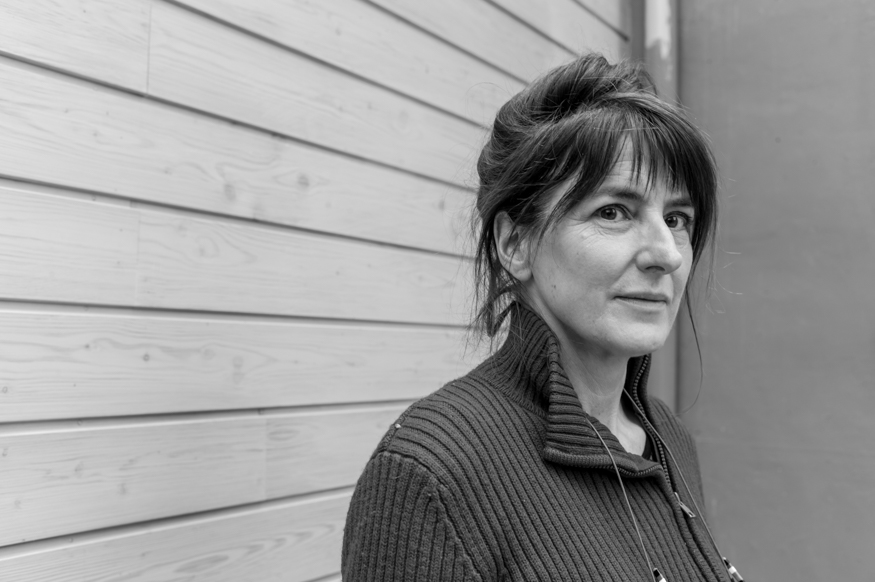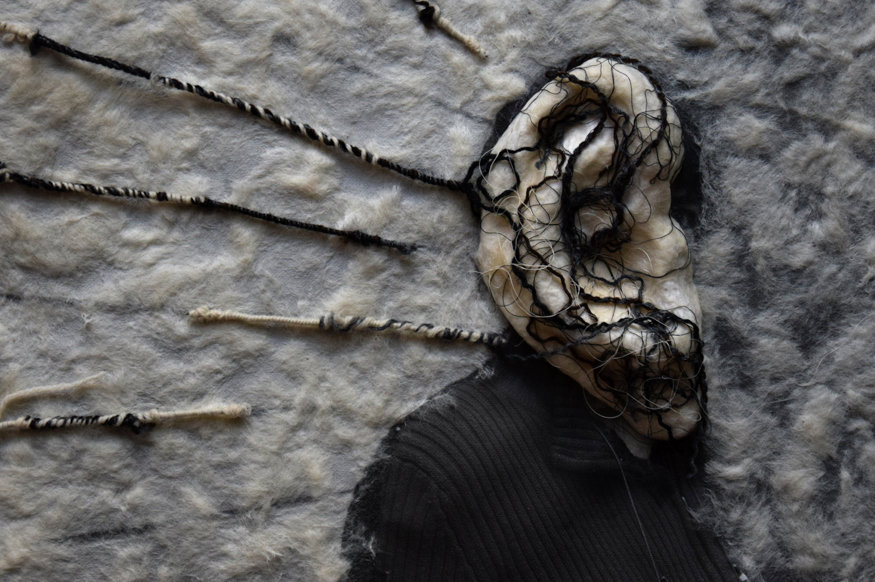Florence Baudin’s work immediately reveals a rich plasticity. Besides thread and fiber, materials common in contemporary textile art, she also draws, sculpts, uses sound and incorporates in her work such diverse materials as plaster, wood, pigment, cardboard, stains, bees’ wax, wood shavings, wire, birds’ down and sand… By giving priority to simple, natural and often non-technical materials, her work shows a “neo arte povera” dimension, though her artistic concerns are more emotional than theoretical.For a long time, Florence Baudin has considered the body as a receptacle both of the world and of memory. This body is never seen in its entirety, but in fragments: hand, heart, brain, arm, chest, ear…These organs and body parts inhabit her sculptural installations as containers and producers of signs and meanings, of what shapes the world, of what conveys and builds memory.
Moreover, there is a specifically psychoanalytical dimension to the artist’s work that Freud would not have denied. For him, the ear, which appears frequently in the artist’s works, was more than just the hearing organ, something more than just the words it hears; the ear is the hidden box of family secrets, the immemorial organ of secrets, as was written in the Ebers papyrus (the oldest known medical text, dated 1600 years before our era): “The ear understands what is hidden from the eyes.’’The recurrent theme of the fragmented body does not so much address the distress of the existential body as it does the body as an emotional container, or more precisely the body as the receptacle of history. As seen in a series of cast works in stained paper from 2011, the body appears like a “hollowed out memory,” a memory that works in the shadow. The artist, who is very interested in psychoanalysis, stresses the importance and manner in which memory imprints the body. This notion is particularly apparent in her most recent work, which seeks to show the link between family history, filiation, memory, secrets, and the way the body encodes these traces. Perhaps these works consider the family as a body, with each member a body part, an organ, with a joined and common history, as we talk about the “family unit” or the “social organism.” In her work, some pieces express that, like the installation of 2012 entitled “Conciliabule,” in which three skulls talk among themselves, apparently sharing a secret, or another work from 2012 entitled “Pièces de rechange,” or even the secret boxes that repeatedly mark the course of her inspiration.
The family and filiation are essential elements in Florence Baudin’s work. The series “Echos” resonates with family memories, echoes of her personal history and with what is whispered. Echoes also of what the body says, emerging like shadows suddenly materialized upon the surface of the canvas, redoubled by the photographs taken by the artist and printed onto the fabric, like reflections from an abyss. Through effects of transparency and depth, between the molded sisal fibers and the interwoven colored threads, the organs become patterns and ideas, keeping the mystery of their organic reality intact. In her most recent series, the artist works with items of clothing that belonged to her family, thus expressing her will to impress the meaning of her filiation, of her family history. Some pieces are embroidered with the family initials, according to the ancient wedding custom. In addition to the handmade and “feminine” dimensions suggested by her work, the notion of domesticity and an interest in the familial life of domestic labor appear to be essential: spools of thread, kitchen aprons, clothes irons and even an old sewing machine cast in sisal (“Petites Mains”) take form in her work, incorporating elements of both painting and sculpture. This interest is linked to the notion of heritage, of the transmission of history and memory, stamped in the depth of the household linens and of these old things that have lived and now hold traces of the past. The artist injects a new shape and a new life into them, not breaking with the past but rather maintaining a concern to continue, to re-appropriate through time and space, in much the same way that the body encarnates the memories that pass through it.
Through these evocations of the body as the hollowed out receptacle of the still living memory and these objects that the artist infuses with new life, Florence Baudin seeks to rouse from time and the void tangible traces of an inalienable experience of life and resurrection.

